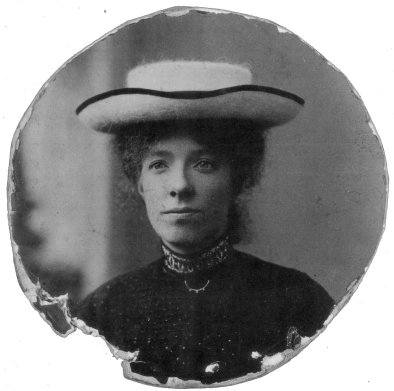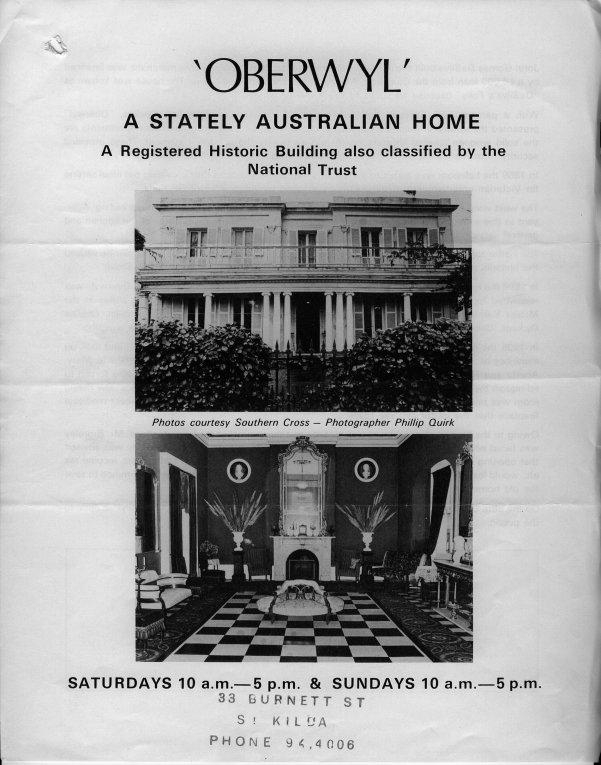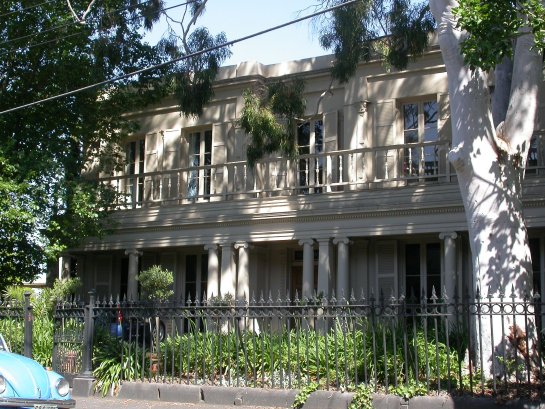|
|
|
Home | Introduction | Contents| Feedback | Map | Sources | Glossary |
|
27
Oberwyl (Formerly Etloe Hall)
Henry ‘Money’ Miller, MLC (1809-88), financier
and opportunist, who died leaving an estate of over £1.6 million, is said to
have advanced £4,000 to merchant John Gomez De Silva to finance construction of
his house Etloe Hall, in 1856; an amount so fabulous
that the house is said to have been known as De Silva’s Folly. De Silva was a
Portuguese merchant and importer who lived in
In 1853, the 12 acres (4.85 hectares) of
Dalgety’s Paddock was subdivided and auctioned. Oberwyl
was built on five of these allotments. Its designer is not known.
Architectural historian, George Tibbits has
suggested John Felix Mathews as architect of Oberwyl.
He was certainly very prolific and 119 designs in
Etloe
Hall’s severe Greco-Regency, neo-Classical manner although rare in Melbourne,
does occur in other St Kilda houses of the mid-nineteenth century, such as
Berkley Hall, 11 Princes Street (26) (1854) and 25 Chapel Street (1869).
Perhaps the Regency gaiety of this style, derives
from its seaside location, as Miles Lewis suggested. It could be said to have
something in common with the architecture of
In 1856, Etloe Hall was a double-storied symmetrical house with four principal rooms on each floor, divided by a broad hall, the facade slightly recessed at the central entrance bay. The five bays each have French doors. The façade is decorated with Ionic pilaster-pairs, guilloche at ground floor openings, cornice-band and mould. It is a most refined architectural composition.
Etloe
Hall appears in the 1857 St Kilda Ratebook.
In March 1857, the Argus reported the auction of De Silva’s newly erected
17-roomed house. By 1859, he had suffered sufficiently in business to have
escaped from the colony and the house was resumed by Bank of Victoria. In 1858,
Etloe Hall was leased by the bank to John Mackenzie,
who retained it for almost twenty years. The next year, or 1861, Mackenzie added
the ballroom, to the north-west corner, near
The Swiss art patron Madame Elise
Pfund (1833-1921) established a highly regarded
girls’ boarding school, at Oberwyl in 1867, which
survived until 1931. The school was known for its elegance and French culture.
Madame Pfund was Elise
Tschaggeny, who renamed Etloe Hall after her
home
Whilst the sisters were at Oberwyl, they enjoyed the powerful protection of Lady Loch, wife of the Victorian governor Sir Henry Loch (1827-1900, governor:1884-89). This was the period when the scale and grandeur of life at Government House in the Domain was at its height and governors had real influence in society. Their hospitality was on a very large scale and continued incessantly. Oberwyl and Mouchette’s school were vividly described by Oscar Comettant, in 1888.
The sisters were founders of the Alliance
Française (18) in
Madame Mouchette’s paintings consisted mainly of flower studies. Her 1891 exhibition was dominated by a study of single magnolias and nasturtiums, and a branch of romnia, a most decorative Japanese flower. Paintings by a Miss Macpherson (sic) were included in an exhibition of work by Madame Mouchette’s pupils, c1890.
Margaret Preston (1875-1963) about 18, at Oberwyl
In 1892, the sisters auctioned their picture
collection and moved to
Oberwyl
Ladies’ College was entirely private and fee-paying. It never received any
government grants, unlike church-owned denominational schools (such as Acland
Street Church of England School and
Garton and
Henderson owned Oberwyl and its Ladies’ College
until1910, when Miss Henderson left their partnership and bought the
From 1910, Miss Garton
remained living at Oberwyl and from 1935; it became
the home of five Garton sisters: Katherine,
Advertising a Stately Home Open Days, 1975 Oberwyl’s history is victim to discrepancy and tangled skeins. It seems to have been confused by researchers with Eden Hall, which may have been its twin at the Barkly and Princes Streets junction. Michael Clarke, in his biography of his ancestor, Sir William Clarke of Rupertswood, says it was he who advanced the initial £4,000, but for Eden Hall. It is even possible that De Silva built both houses. The mystery remains.
Oberwyl, 2004
Note:
There are no
general histories or comparative studies of private schools in
References ‘Berthe Mouchette’. (Unidentified source, National Trust File). p48.
Butler, Roger.
The Prints of Margaret Preston.
A Catalogue Raisonné.
Australian National Gallery.
Clarke,
Michael. Clarke of Rupertswood.
1874-1897.
Croggan,
Alison. ‘In the Grand Manor’.
Emerald Hill Press.
Lewis, Miles.
(Architects Index).
Architectural Survey. Final Report.
Lewis, Miles. Melbourne Mansions. (Database).
Lewis, Miles.
Physical Investigation of a Building.
Technical Bulletin. 9.1.
National Trust of
McCaughey,
Davis, Perkins, Naomi, Trumble,
Angus.
McQueen
Humphrey. Tom Roberts. Macmillan.
National Trust
of
Nigel Lewis and Associates. St Kilda Conservation Study. Area One. 1982. p92.
Peterson,
Richard. Fences & Gates c1840-1925.
Technical Bulletin. 8.1. National Trust of
Pike, Douglas,
Ed. Australian Dictionary of Biography.
1851-1890. Vol.
5.
Radford, Ron
(Ed.). Tom Roberts. Art Gallery of South Australia.
Sands and McDougall Directories. 1874, 1876 & 1879. Sheenan, Margaret. Berthe Mouchette. A Biography.
Staughton
Peter S., Chairman, Survey & Identification Committee.
National Trust of
The Argus. 16 June1856
The Argus.
Victorian Heritage Register. File No.H214.
|
|
St Kilda Historical Society Inc. © 2005 |

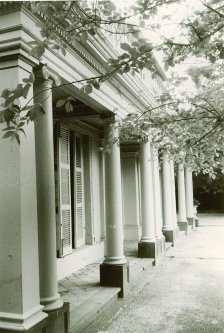
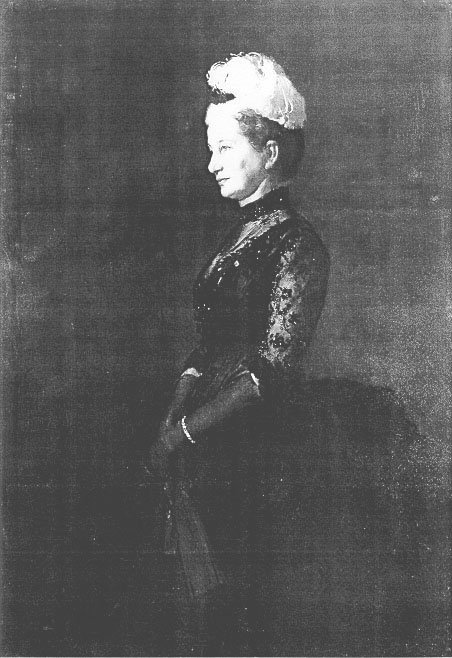 In
1878, the colonnaded verandah and two-storied south-east wing were added.
In
1878, the colonnaded verandah and two-storied south-east wing were added.